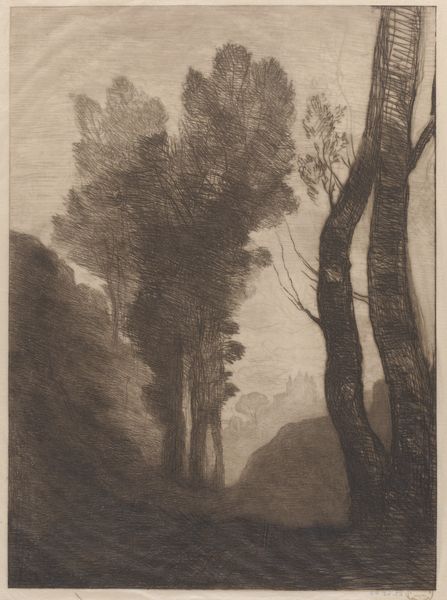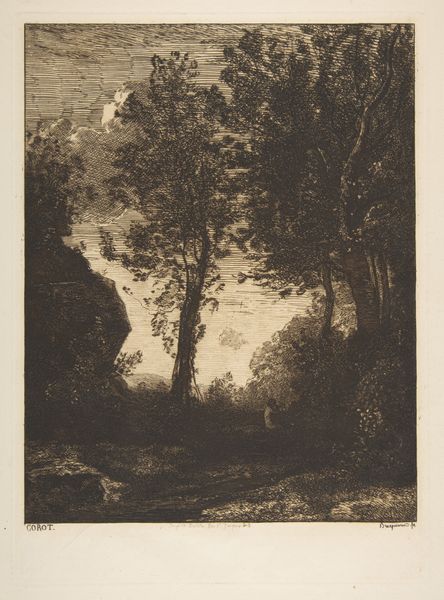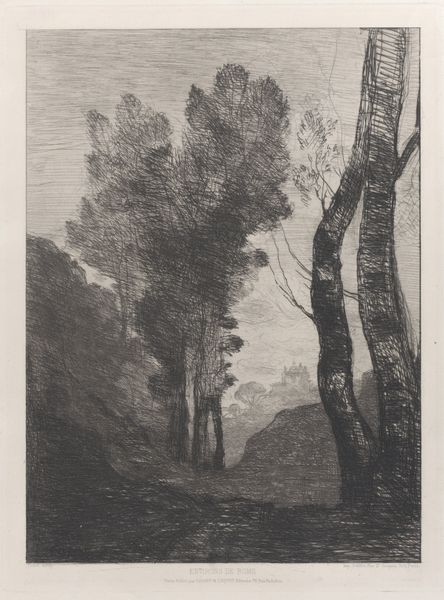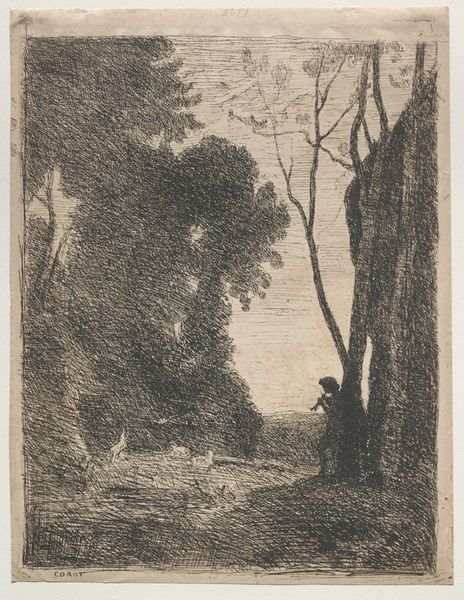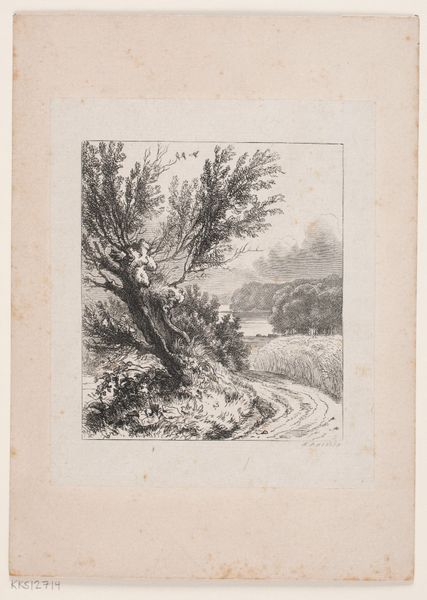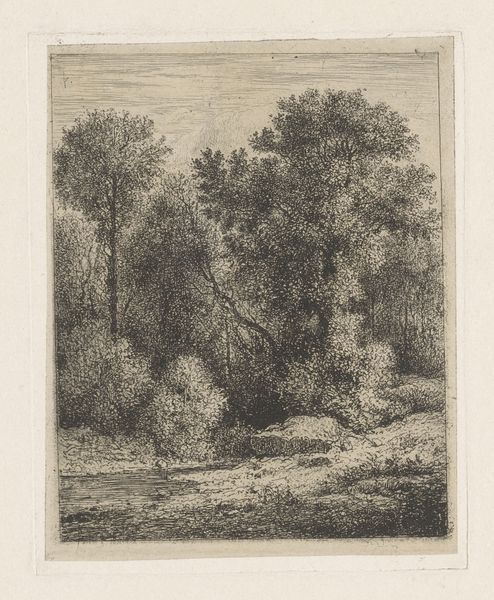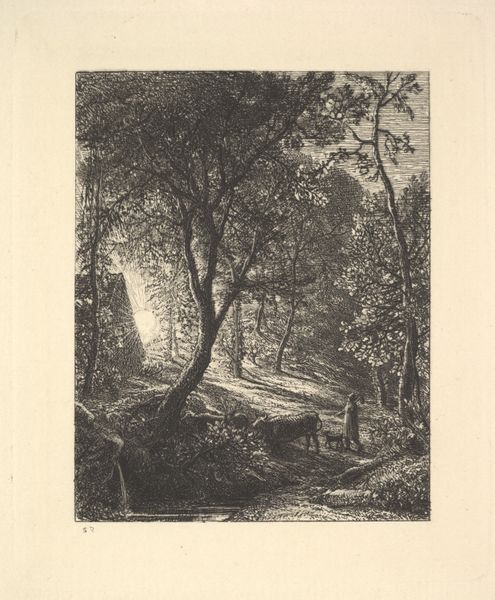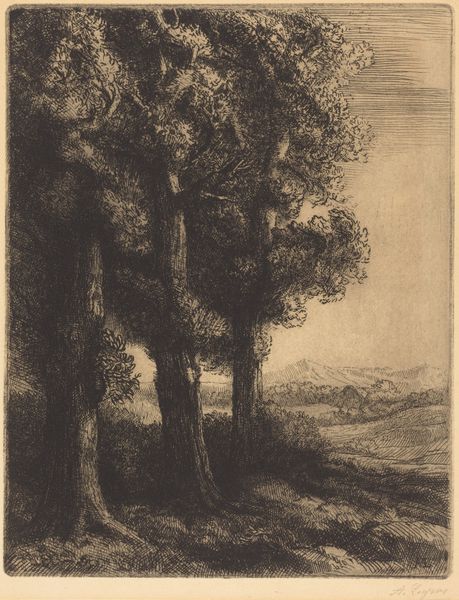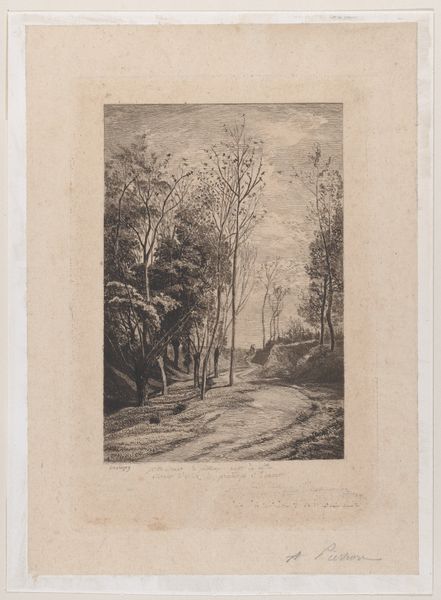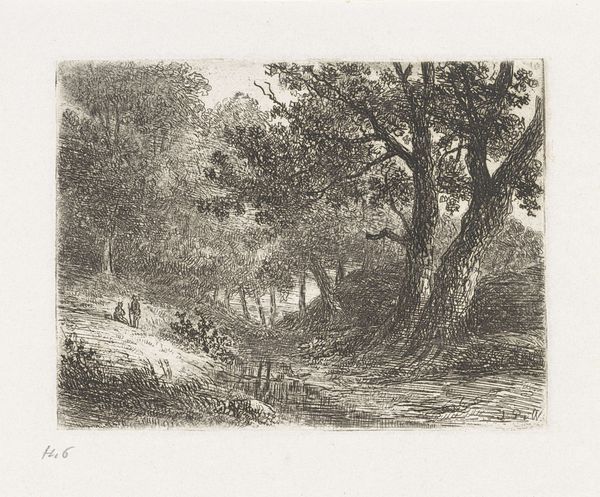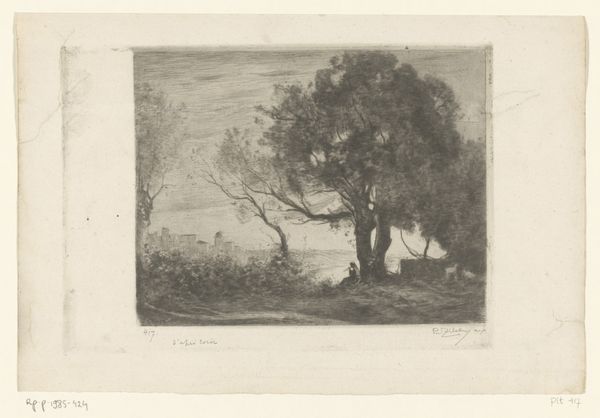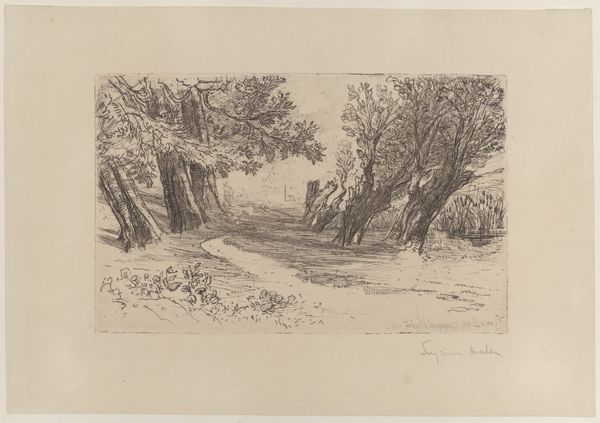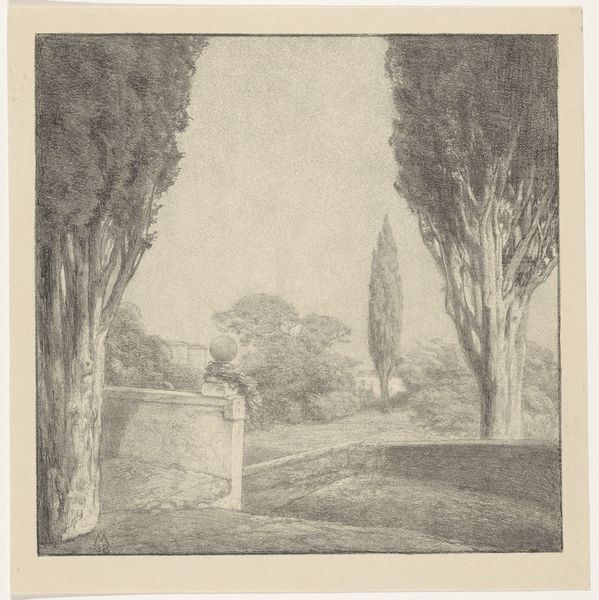
drawing, print, etching
#
drawing
# print
#
etching
#
landscape
#
romanticism
Dimensions: Image: 5 3/4 × 4 3/4 in. (14.6 × 12.1 cm) Plate: 7 1/2 in. × 6 in. (19.1 × 15.2 cm) Sheet: 12 in. × 10 1/4 in. (30.5 × 26 cm)
Copyright: Public Domain
Curator: Here we have Charles-François Daubigny's "The Banks of Cousin," an etching dating from somewhere between 1845 and 1855. It’s a rather contemplative landscape. What’s your initial impression? Editor: Somber. It's quite dark, isn't it? All those deeply etched lines contribute to a mood of… melancholy. I'm immediately drawn to considering how environmental narratives and romanticism intersected during the mid-19th century. Curator: Precisely. Daubigny’s skill here is how he utilizes the stark contrast between light and shadow. Observe how the light gently catches the top of the slender tree on the left. It serves to direct the viewer’s eye towards the distant horizon line. Editor: And the water too seems still. There is no sign of industrialization. Who has access to this place, right? Does the absence of humans, save a shadow in the distance, romanticize an agrarian fantasy and whose labor really provides such spaces? Curator: It could, but consider how the texture creates an interesting balance between precision and suggestive blur. The crosshatching mimics organic density in the foliage and, by obscuring any real sign of life, serves to heighten a sense of formal abstraction. Editor: Even in its abstraction, such landscape work of the Romantic era perpetuates ideas of nation, property, class, gender roles. I guess it also makes me consider if our very construction of romanticism relies upon denying access to and rewriting narratives for women and people of color. Curator: That is perhaps more overt in paintings of the period. In this etching, however, I find its strength rests in the delicate handling of tone. This work masterfully captures the quiet intensity that printmaking can evoke. It gives a material grounding to the subject it portrays. Editor: Grounded, maybe, but it's always vital that we excavate the power dynamics implicit within Daubigny's atmospheric depiction, acknowledging the complex socio-political environment in which this landscape—however serene it may seem—was etched and subsequently interpreted. Curator: True, this piece operates through carefully balanced visual structure. One can observe those formal components while still acknowledging your critical considerations. Both have to coexist when encountering something so elegant in its apparent simplicity. Editor: Well put. It leaves us pondering not just the 'what' of art, but crucially, the 'why' and 'for whom' and how that all ripples through the centuries into our own engagement.
Comments
No comments
Be the first to comment and join the conversation on the ultimate creative platform.
